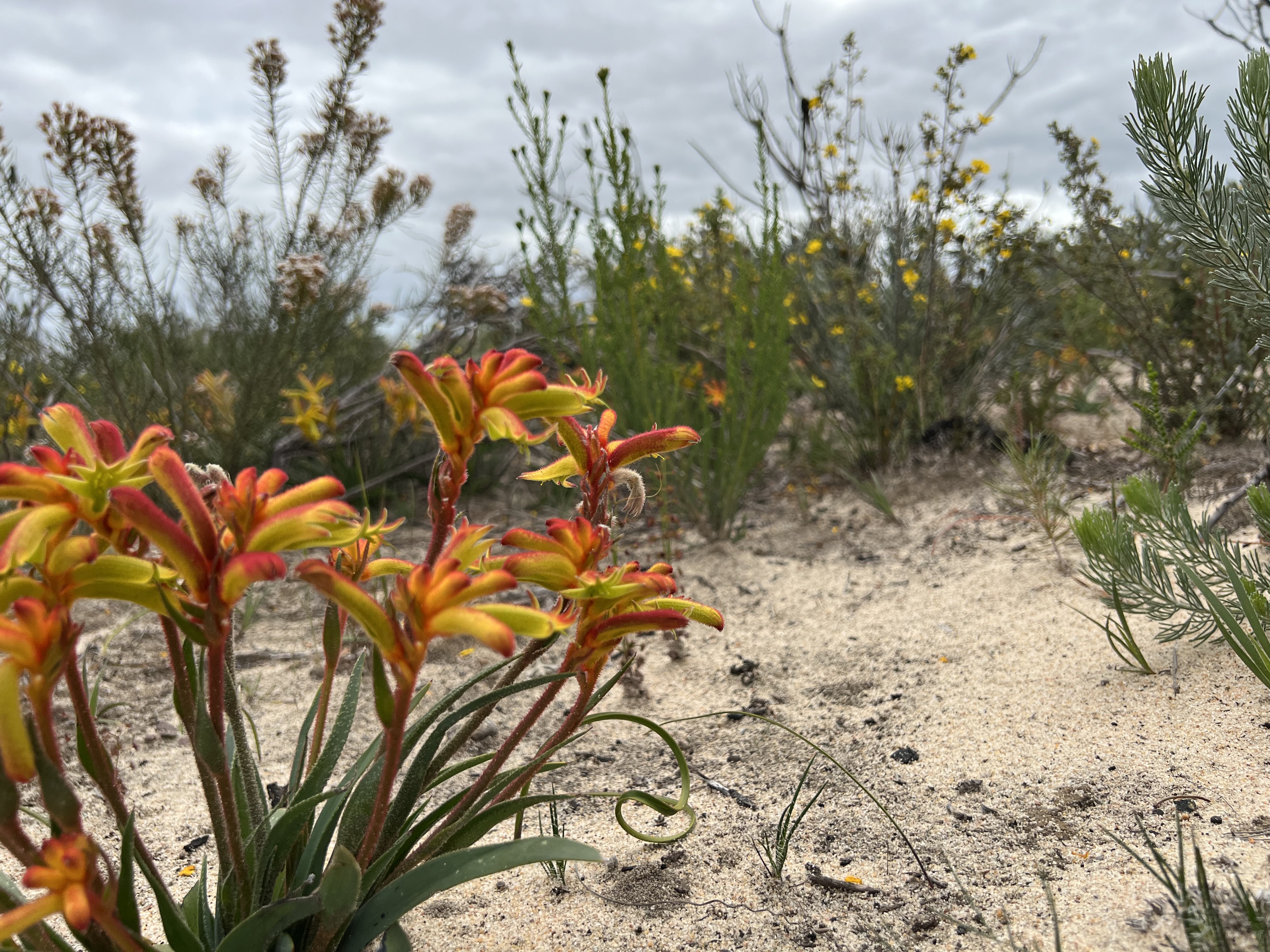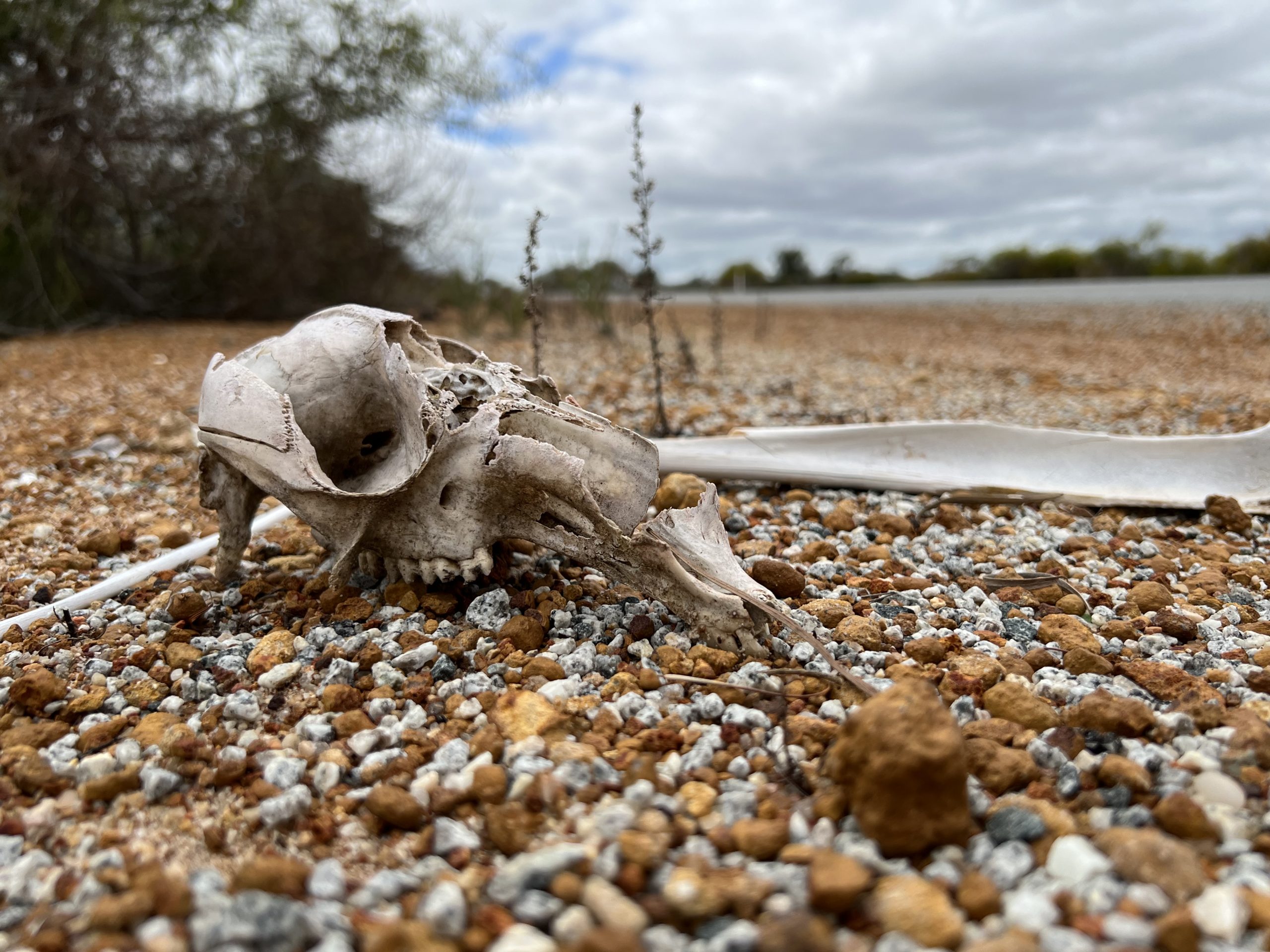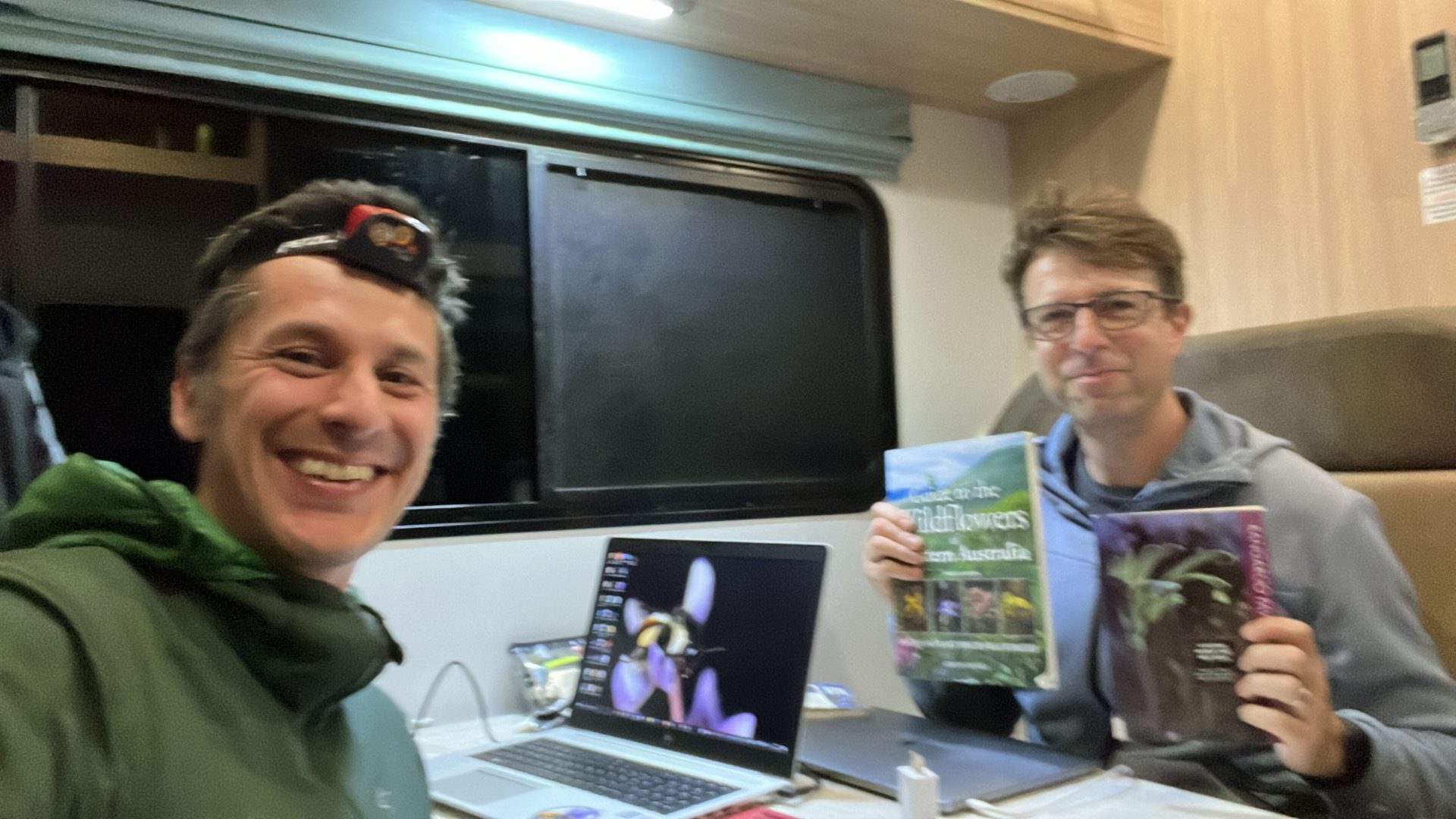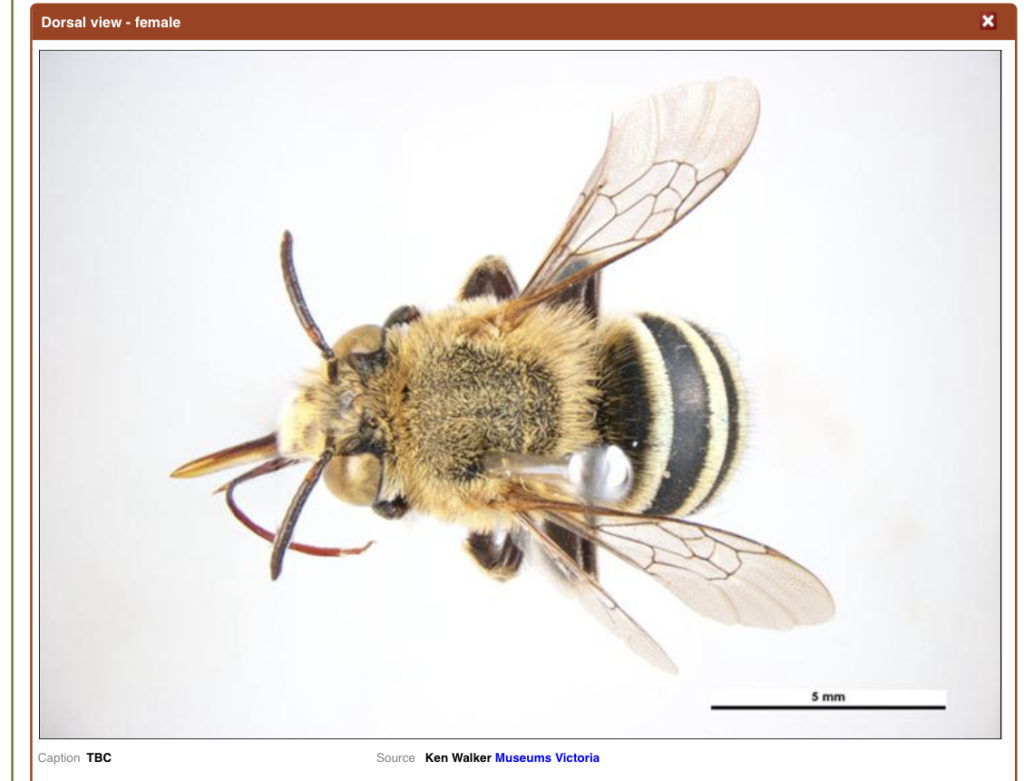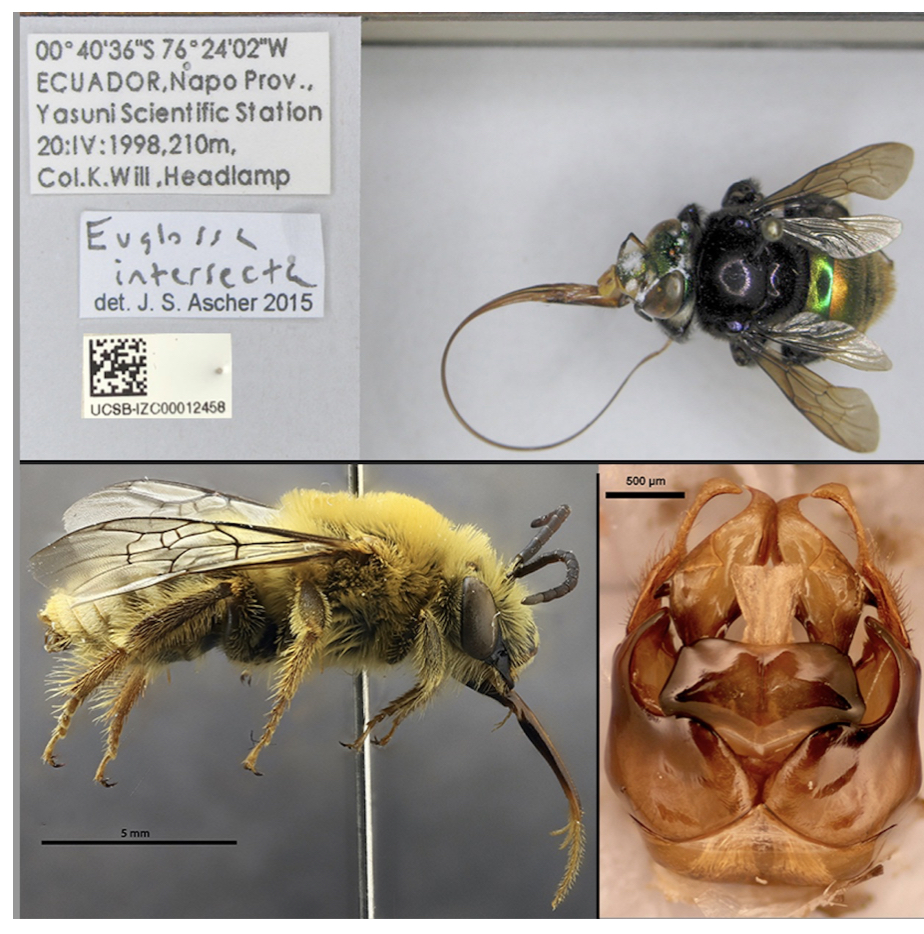16 September. We spent the night in Green Head, and this morning we explored the hens growing along the coastal walk. Rocky headlands that break into transparent waters with barely any waves. An osprey guards the shoreline, and then heads inland to collect branches for its massive nest on top of a manmade pole. No bees but honeybees this morning either. We have a nice chat with a cafe owner that invites us back to talk about bees to their local community. We exchange contact details to arrange a virtual talk once I’m back in Sweden.
Today we are heading inland to try to find wild bees along the area of Lake Indoon, where we see old eucalyptus trees that serve as home to birds and as food to parrots that tear down flowers after squeezing out the nectar and thousands of honeybees. The hum of the honeybees above our heads is impressive (later that night I dream of honeybees and beekeepers). No wild bees.
We push onward to the road near Lake Louge, and David suggests stopping on the roadside to check an area that has recently burn down and where wildflowers are making a beautiful display of oranges, reds and yellow. We pull over. On the margin of the road there is an old skeleton of a kangaroo, the vertebrae lined up and the skull laying in the gravel. As we walk away from the road we come to an incredible display of cat’s paws that extend as far as you can see, the short, yellow and red inflorescences of this bird pollinated plant poke their heads above the white sand. Among them there are carnivorous plants that place their traps above the ground in a vertical, miniature branch about 20 cm tall. The land is covered by Bchrred skeletons of Banksia that went up in flames when the land burnt but that have resprouted with a vengeance. There are few flowers, but in one of them we see some activity. They are wild Australian bees!
We finally have managed to find the elusive pollinators as the day warms up. We sample some miniature bees that congregate in dozens in the pink inflorescences of the Banksia. We also find a few large bees with black thoraxes and blue tinged abdomens (Colletidae?), and excited for the new discoveries we set up the mobile lab in the Buzz Bus. David takes the lead on the data acquisition controls in the computer, and I lasso the first bee and press it against the miniature accelerometer that will record its buzzes. A high pitch symphony of annoyed buzzes is swiftly recorded and we have our first data point!
We spend a couple of hours here seeking out bees, recording buzzes, and photographing their flower food. As the afternoon approaches, we pick up the mobile lab and start driving inland towards our next destination. We are headed to Coalseam to search for more bees and flowers. As the sun sets, the clouds begin to thin out, and we hope that the overcast cool days of the last week will finally yield to the sunny, warm skies that will get bees out of their sheltering hideouts.
